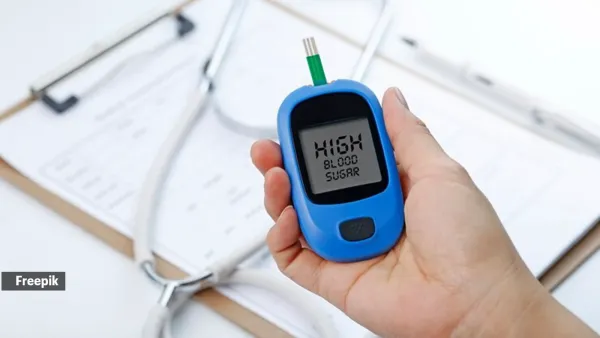
They say food is fuel. But do not take it lightly if your or any family member's blood sugar level hits the 200 mark after every meal.
Consult a doctor immediately. We tell you why.
"Having a blood sugar level of over 200 mg/dL after eating is not normal. After meals, postprandial blood sugar levels are generally expected to be less than 180 mg/dL within two hours. Not being so indicates poor control over blood glucose, which may eventually lead to the development of diabetes," said Dr Narendra BS, Lead Consultant - Endocrinology & Diabetology, Aster Whitefield Hospital, Bengaluru
"A desirable level for blood sugar should be below 140mg/dl two hours after having your meal. For those with diabetes, the American Diabetes Association suggests keeping it under 180mg/dl," he added.
Isha Lall, a nutritionist certified in Ayurvedic nutrition, agreed and said that the ideal blood glucose post-meal varies from 130mg/dl to 140mg/dl. "If you find your blood sugar levels crossing 140mg/dl after every meal, it clearly indicates an onset of pre-diabetes," she said.
According to Dr Narendra, blood sugar levels usually surge after eating because carbohydrates are digested, absorbed, and converted into glucose. "
 Learn how to manage your blood sugar levels (Source: Freepik)
Learn how to manage your blood sugar levels (Source: Freepik)
This spike may become more pronounced if the food contains high amounts of simple sugars or refined carbs, as they quickly enter the bloodstream," he told indianexpress.com.
Lall shared that a sedentary lifestyle, along with constant stress, physical or mental, causes the body to release cortisol and raise sugar levels.
How can you curb this?
To regulate surges in blood sugar, Dr Narendra recommended consuming fiber-rich foods such as fruits, vegetables, whole grains, and lean proteins like poultry without skin.
Fish and healthy fats, such as avocados or nuts, should also be included to keep levels stable. These nutrients slow down how fast sugar is taken up by the body.
"Additionally, routine exercise and portion control can help maintain steady glucose levels in the bloodstream, avoiding swings from high to low, which often leads to hypoglycemia or hyperglycemia, respectively," he said.
Lall suggested taking a 100-step walk after every meal to stabilise your blood sugar level. She also mentioned that feeding your liver with bitter foods like karela, neem, and gourds is a great way to stay healthy.
-
'My twin and I were both diagnosed with same cancer just months apart'

-
SportVot x FPJ: Rajya Ajinkyapadh Kabaddi Tournament Kicks Off In Pune With Thrilling Matches

-
NEET-UG 2025 Results Declared: Rajasthan's Mahesh Kumar Tops, Maharashtra Shines With 11 In Top 100

-
Jannik Sinner still suffering from Carlos Alcaraz loss as he moves on to next event

-
Jannik Sinner still suffering from Carlos Alcaraz loss as he moves on to next event
